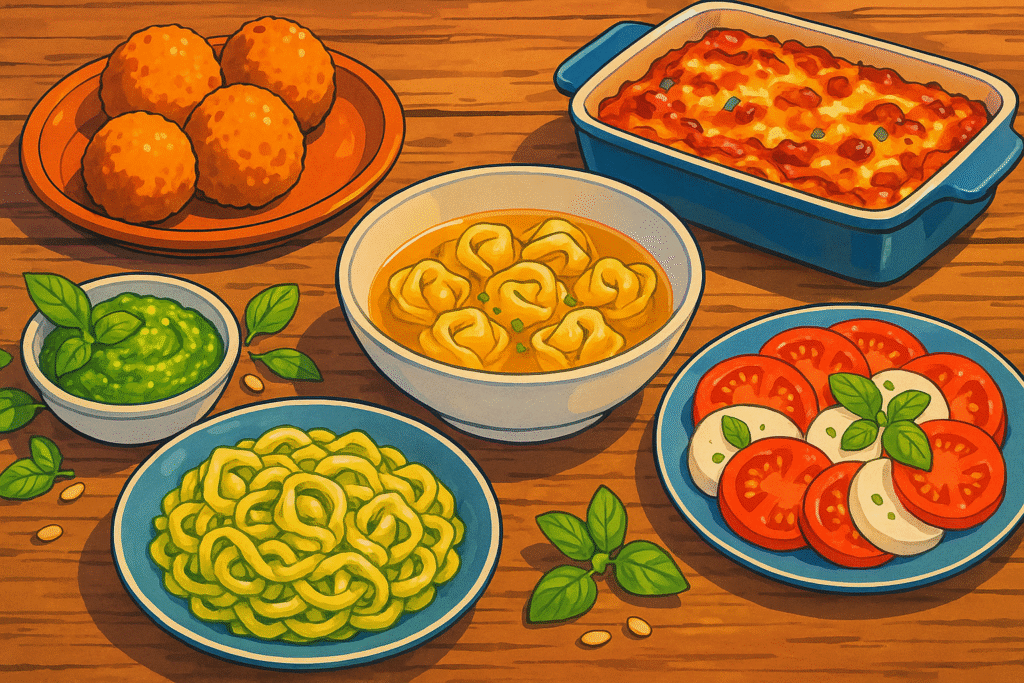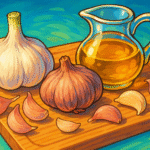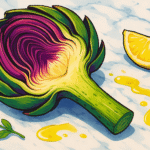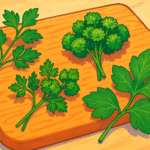Italian Cuisine

Italian cuisine is a vibrant panorama of flavors, steeped in tradition and shaped by centuries of regional diversity. Hailing from the Mediterranean peninsula, Italy’s food is all about simplicity meeting sophistication — local ingredients, cooked with respect, resulting in bold yet balanced dishes. Picture ripe tomatoes and grassy olive oil, sun-dried herbs, flaky sea salt, and aged Parmigiano-Reggiano.
Italian cooking pairs these elements in unforgettable ways, whether in a Roman cacio e pepe, Sicily’s citrus-laced seafood, or a rustic Tuscan bean stew.
What sets Italian cuisine apart is its celebration of seasonality and locality; from Alpine butter and wild mushrooms of the north to the spicy chilies and anchovies of the south, each bite tells a story of place and time.
The History of Italian Cuisine
Italian food’s roots run deep. Ancient Romans cultivated wheat, olives, and grapes — staples that still define the cuisine today.
Over centuries, Italy absorbed influences from Arab traders (think: citrus, rice, sugar), Norman invaders, and Spanish royalty, each adding layers of complexity to local kitchens.
Tomatoes, a New World arrival in the 16th century, revolutionized southern Italian cooking, leading to iconic sauces and pizzas. The concept of “La Cucina Italiana” as a national identity crystallized more recently, as regional peasant dishes gained global prestige. Today’s Italian food is the result: an ever-evolving but fiercely proud celebration of fresh ingredients, time-honored techniques, and the shared joy of the table. Across the globe, Italian culinary methods have inspired everything from Argentine pizza to American pasta salad.
Key Ingredients in Italian Cuisine
Top Dishes in the Region
Top Food Destinations in the Region
Our favorite content showcasing Italian Cuisine
Check out some of our favorite content creators diving into italian cuisine!
FAQs About Italian Cuisine
What are traditional Italian ingredients everyone should know?
The Italian pantry revolves around a few essentials: extra virgin olive oil (each region has its own prized varieties), aged balsamic vinegar, Parmigiano-Reggiano, Pecorino Romano, San Marzano canned tomatoes, garlic, fresh and dried pasta, capers, anchovies, and aromatic herbs like basil, oregano, and rosemary. High-quality regional flours, rice, and a rainbow of local vegetables make each dish unique.
Is Italian food always pasta and pizza?
Not at all. While pasta and pizza are internationally heralded, Italy’s culinary tapestry includes polenta in the north, risotto from Lombardy and Veneto, hearty lentil soups, grilled seafood along Adriatic coasts, and mountain game in Piemonte or Trentino-Alto Adige. Cured meats, nutty cheeses, and rustic vegetable preparations feature just as prominently.
How do Italian meals traditionally unfold?
Italian meals are a social event often served in courses: antipasto (appetizers), primo (pasta, risotto, or soup), secondo (meat or fish), contorno (side dishes of vegetables), dolce (dessert), plus coffee, liqueurs, and — always — lively conversation. Portions are usually moderate, allowing diners to savor each course and each other’s company.
What distinguishes northern and southern Italian cuisine?
Northern Italy leans on butter, cream, and meats; you’ll find risotto, polenta, and slow-cooked meats alongside Alpine cheeses. The south favors olive oil, tomatoes, seafood, spicy peppers, and bold, bright flavors. Both regions, however, put regionalism first: menus reflect the land as much as tradition.
Why does Italian food taste so good?
It comes down to reverence for ingredients and technique — a belief that the best meals come from what’s close at hand, in season, and cooked with patience. Italian cooks value the integrity of each element: letting a summer tomato taste like sun, or a wedge of Parmigiano tell its own story. That, plus a splash of history and a communal spirit, makes every bite unforgettable.






